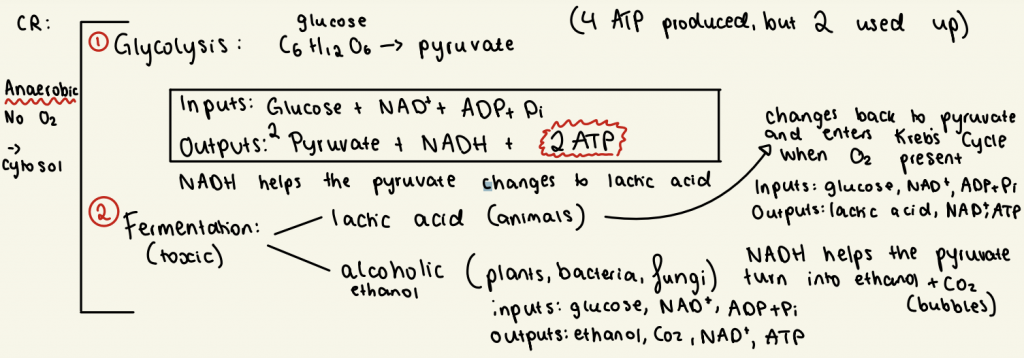Biology Diagram about Cellular Respiration
Summary:
Glucose metabolism is a complex process that plays a crucial role in cell energy production. It involves several interconnected steps that transform glucose into usable energy molecules.
The first step in glucose metabolism is glycolysis. During glycolysis, glucose is broken down into pyruvate molecules. This process occurs in the cell’s cytosol and generates a small amount of energy through 2 ATP molecules. If oxygen is present, pyruvate can proceed to the next stage of metabolism, the Krebs cycle.
The Krebs cycle, or the citric acid cycle, occurs in the mitochondria. In this cycle, pyruvate is further processed and undergoes a series of chemical reactions, producing energy-rich molecules. These reactions generate NADH, CO2, and additional ATP molecules. NADH is vital in transferring energy from glycolysis to the Krebs cycle, ensuring a continuous supply of ATP.
The electron transport chain (ETC) follows the Krebs cycle in aerobic conditions. The ETC occurs in the inner mitochondrial membrane and involves a series of protein complexes and molecules. Oxygen is the final electron acceptor, combining electrons and hydrogen ions to form water. As electrons move through the ETC, energy is released to pump hydrogen ions across the membrane, establishing an electrochemical gradient. This gradient powers ATP synthesis through a process called oxidative phosphorylation. The ETC generates ATP efficiently and is responsible for most energy production during glucose metabolism.
Excerpt:
Biology Diagram about Cellular Respiration
During glucose metabolism, when oxygen is present, glucose undergoes changes to pyruvate and enters the Krebs cycle. NADH assists in converting pyruvate to lactic acid. Inputs for this process include glucose, NADH, and ADP+Pi. In anaerobic conditions, fermentation occurs, producing lactic acid in animals and ethanol and CO2 in plants, bacteria, and fungi. The inputs for fermentation are glucose, NADH, and ADP+Pi; the outputs are lactic acid, NADH, and ATP. In alcoholic fermentation, ethanol and CO2 are produced along with NADH and ATP.


Reviews